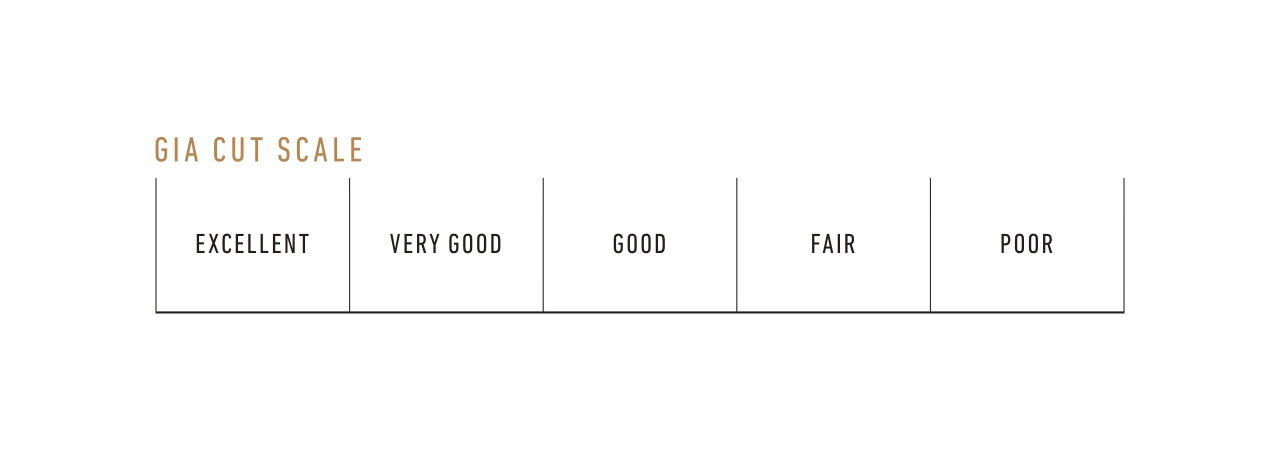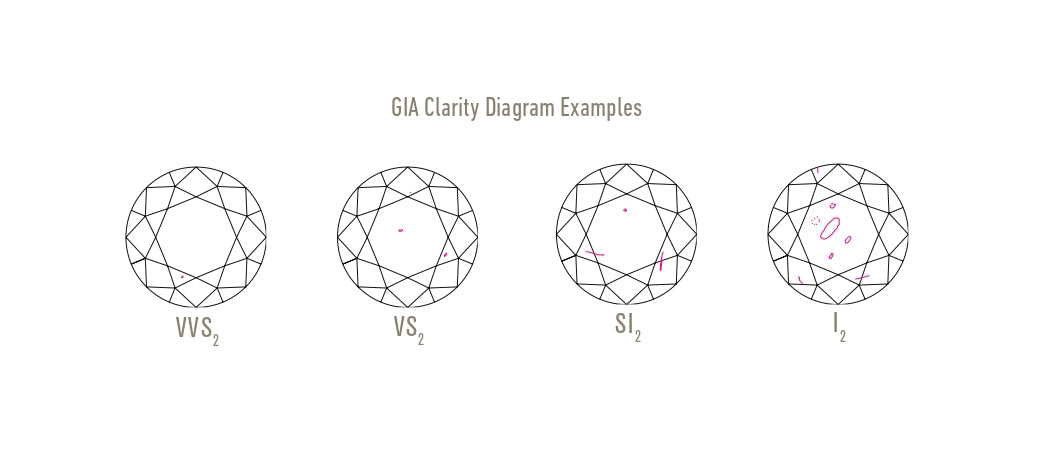Diamond Education
Diamond Education
Understanding diamonds can feel like diving into a sea of sparkle, but we're here to make it simple and clear. Let's break down the essentials of diamonds using the universally recognized 4 C’s: Carat, Cut, Color, and Clarity. With this knowledge, you'll be able to choose the perfect diamond with confidence.
Diamond Cut
The cut of a diamond is what makes it sparkle. It’s all about the proportions, polish, and symmetry. A well-cut diamond reflects light beautifully, giving it that brilliance and fire that turns heads
Imagine a dance of light within the diamond, with each facet reflecting and refracting light to create a dazzling display. On the other hand, a poorly cut diamond can look dull and lifeless, regardless of its size or clarity.
When grading cuts, the International Gemological Institute (IGI) looks at three main aspects for round diamonds: Cut (shape), Polish (surface finish), and Symmetry (facet balance). For other shapes, only Symmetry and Polish are graded. It's a delicate balance—the cutter must choose between the perfect cut for maximum sparkle or a larger size for weight.
Here’s a quick guide to the Diamond Cut Scale:
● Excellent: Highly reflective and proportionately cut.
● Very Good: Very reflective with well-cut facets.
● Good: Most light is reflected back, but proportions are less ideal.
● Fair: Light starts to escape from the bottom or sides, reducing shine.
● Poor: Noticeably dull and less reflective.
NiZi being NiZi, only uses diamonds that are of Excellent or Very Good Cut because we know a secret most people don’t: Cut matters more than Size! Yes, you heard it right; even the biggest diamond wouldn’t be impressive if it wasn’t cut properly, and we do everything to make sure only the best diamonds make the cut (haha).


Diamond Color
When we talk about diamond color, we’re really talking about the absence of color. The closer a diamond is to being completely colorless, the higher its value. Most diamonds have slight color tints, which can affect their price and beauty. The IGI grades diamond color on a scale from D (totally colorless) to Z (noticeable yellow tint).
Here’s a breakdown of the Diamond Color Scale:
Colour |
Description |
D |
Absolutely colorless. Extremely rare and valuable. |
E-F |
Colorless. Very slight traces of color detectable by an expert gemologist. |
G-H |
Near colorless. Slight color visible when compared to higher grades, but excellent value. |
I-J |
Noticeable color. Great value, especially for yellow gold settings. |
K-Z |
Increasingly noticeable color, ranging from faint to more obvious yellow. |
At NiZi, only diamonds that are in the D-F range are able pass our rigorous quality standards. We do this to make sure that the diamonds you are wearing shine as bright as You.


Diamond Clarity
Clarity refers to the natural imperfections within a diamond, known as inclusions (internal) and blemishes (external). These tiny imperfections can affect how light passes through the diamond, impacting its brilliance. However, many of these flaws are microscopic and don’t affect the diamond’s beauty to the naked eye.
Clarity grades range from Flawless (FL) to Included (I):
● FL (Flawless): No inclusions or blemishes visible under 10x magnification. Extremely rare.
● IF (Internally Flawless): No internal inclusions, only minor surface blemishes under 10x magnification.
● VVS1/VVS2 (Very Very Slightly Included): Inclusions are very difficult to detect even under 10x magnification.
● VS1/VS2 (Very Slightly Included): Minor inclusions are detectable under 10x magnification but not visible to the naked eye.
● SI1/SI2 (Slightly Included): inclusions are noticeable under 10x magnification and may be visible to the naked eye.
● I1/I2/I3 (Included): Inclusions are obvious and can affect transparency and brilliance.
Choosing the right clarity depends on what matters most to you. For a flawless look, aim for VVS. If you want the best value, consider VS1 or VS2, which offer great quality without visible imperfections. We don’t use diamonds below the VS category because we are NiZi and that means we only want the Best for YOU.


Diamond Carat
Carat weight measures a diamond’s size. One carat equals 0.2 grams, roughly the weight of a paperclip. One carat is made of 100 cents (like 1 kg is made of 1000 grams) and 1 cent is made of 10 dhoras (it's smaller than a dust particle! It's insanely hard to polish diamonds of such size; imagine how talented our kaarigars must be).
While carat is often associated with size, it’s more about weight. Two diamonds of the same carat weight can look different in size depending on their cut.
Carat weight affects price exponentially. Larger diamonds are rarer, so a 2-carat diamond will cost much more than twice the price of a 1-carat diamond of the same quality.
Here’s a quick reference for round cut diamonds:
● 1 carat: ~6.4 mm in diameter.
● 2 carats: ~8.1 mm in diameter.
Remember, size isn’t everything. A smaller, well-cut diamond can be more brilliant and beautiful than a larger, poorly cut one.
At NiZi, we believe that every diamond should be as unique as the person who wears it. By understanding the 4 C’s, you can find the perfect diamond that matches your style, preferences, and values. Let’s make your diamond journey a sparkling success!
Socials





